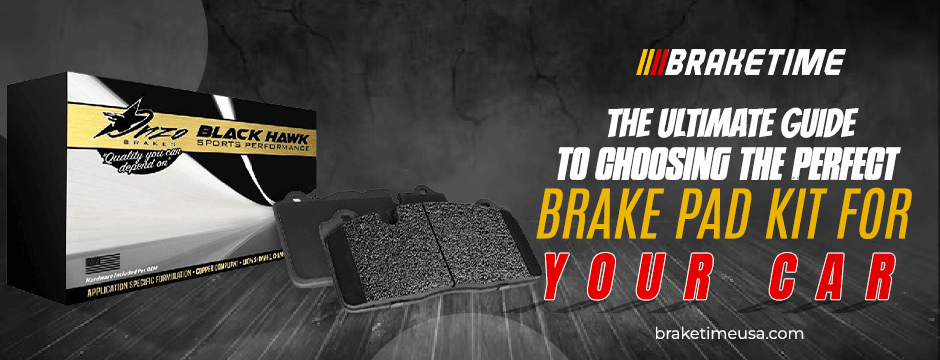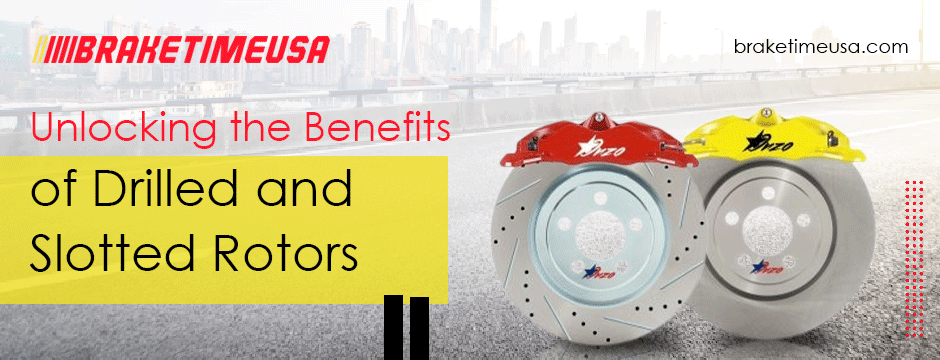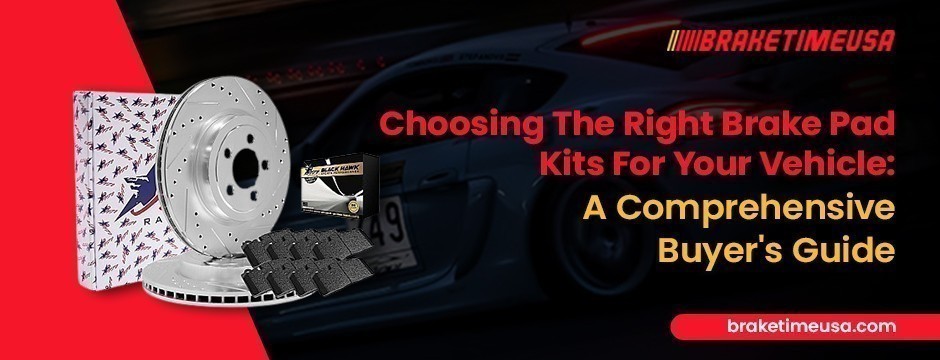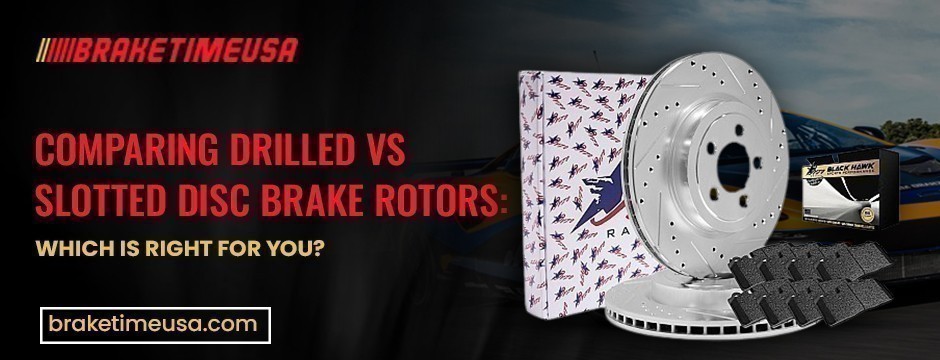Your cart is empty
Subtotal:$0.00
The braking system stands as a fundamental and indispensable component of any vehicle, serving as a cornerstone for safety and control during every drive. Within this intricate system, brake pads emerge as pivotal contributors, responsible for generating the necessary friction essential to decelerate or bring a vehicle to a halt. As drivers are confronted with a myriad of choices when it comes to selecting the appropriate brake pad kit, the decision-making process can often be overwhelming. This comprehensive guide aims to demystify this process, providing valuable insights into the diverse types of brake pads, essential factors to consider, and practical tips for choosing the perfect brake pad kit tailored to the unique needs of your car.

Understanding the Basics of Brake Pads
Brake pads, a crucial component of a vehicle's braking system, are integral to ensuring safe and effective deceleration. These components come in various materials, each possessing unique characteristics that cater to different driving conditions and preferences.
a. Organic Brake Pads: Organic brake pads are crafted from materials such as rubber, carbon compounds, and fiberglass. Renowned for their quiet operation and smooth braking performance, organic pads are favored for daily commuting. However, it's essential to note that their softer composition may result in quicker wear compared to other types.
b. Semi-Metallic Brake Pads: Semi-metallic brake pads incorporate a blend of metals and other materials. This composition provides enhanced heat dissipation, making them suitable for performance driving scenarios. While semi-metallic pads are proficient in high-temperature conditions, they tend to generate more noise and dust.
c. Ceramic Brake Pads: Ceramic brake pads are constructed using ceramic fibers and nonferrous filler materials. This type is recognized for its durability, producing minimal noise during operation, and generating significantly less dust. Ceramic pads are an excellent choice for those prioritizing longevity and a clean braking experience.
a. Daily Commuting: For individuals engaged in daily commuting, prioritizing quiet and low-dusting brake pads is advisable. Organic brake pads, with their noise-free operation and smooth braking, align well with the demands of stop-and-go city driving.
b. Performance Driving: Enthusiasts engaged in spirited driving or performance-oriented scenarios may find semi-metallic brake pads more suitable. The increased heat dissipation capability of these pads ensures optimal performance under demanding conditions, albeit at the cost of some noise and dust.
c. Towing: Towing places additional stress on a vehicle's braking system, necessitating robust brake pads. Heavy-duty or ceramic pads are recommended for towing applications, offering increased durability and mitigating the risk of brake fade – a condition where prolonged or intense braking results in reduced stopping power.
Understanding these distinctions among brake pad types allows vehicle owners to align their choice with specific driving needs and preferences. Whether seeking a noise-free commute, high-performance capabilities, or durability for towing, selecting the appropriate brake pad type ensures optimal braking performance tailored to individual requirements.
When navigating the vast array of brake pads available in the market, it's crucial to consider several factors to ensure the optimal performance, safety, and longevity of your vehicle's braking system.
Vehicle Compatibility: The first and foremost consideration when choosing brake pads is ensuring compatibility with your car's make and model. Brake pads are not one-size-fits-all, and selecting pads specifically designed for your vehicle ensures a proper fit. This compatibility is essential for optimal performance and safety, as mismatched brake pads may not function effectively.
Driving Conditions: Tailoring your choice of brake pads to your typical driving conditions is paramount. Different environments and scenarios demand varying levels of performance. Consider the following driving conditions:
City Driving: For those navigating urban landscapes with frequent stops and starts, organic or ceramic brake pads are recommended. These pads offer smooth and quiet stops, ideal for the stop-and-go nature of city driving.
Highway Driving: If your driving involves long stretches of highway cruising, semi-metallic brake pads become advantageous. Their ability to dissipate heat effectively suits the higher speeds and sustained braking associated with highway travel.
Off-Road Driving: Off-road adventures introduce additional challenges to the braking system. Opting for heavy-duty or specialized brake pads enhances durability and performance in rugged conditions, where standard pads may falter.
Brake Pad Wear and Lifespan: Understanding the expected lifespan of brake pads is crucial for planning maintenance and replacements. While ceramic brake pads generally have a longer lifespan, providing extended durability, organic pads may offer a smoother performance but require more frequent replacement due to their softer composition. This consideration aligns with both performance preferences and long-term maintenance planning.
Noise and Dust Production: Your tolerance for noise and the desire for clean wheels play a role in brake pad selection. Ceramic brake pads are known for producing less noise and generating minimal dust, making them suitable for those who prioritize a quiet and clean braking experience. In contrast, semi-metallic and organic pads may exhibit higher noise levels and dust production, with the trade-off of meeting other performance criteria.
Brake Pad Cost: While the initial cost of brake pads may vary, understanding the long-term value is crucial. Ceramic brake pads, although often more expensive upfront, tend to offer better longevity and reduced maintenance costs. Considering the overall cost of ownership, including factors such as replacement frequency and maintenance requirements, allows car owners to make cost-effective decisions aligned with their budget and preferences.
By taking these factors into account, car owners can navigate the brake pad selection process with confidence, ensuring that their choice aligns with the unique demands of their driving habits and the specific characteristics of their vehicle.
Selecting the ideal brake pad kit involves considerations beyond just the type of brake pads.
Complete Brake Pad Kit vs. Individual Pads: Brake pad kits come in two main variations – complete kits and individual pads. Complete kits may include additional components such as brake rotors, shims, and hardware. Assessing your needs and budget is essential in determining which option is more suitable. While complete kits offer convenience and may be cost-effective, individual pads provide flexibility for those who only need specific components.
Brand Reputation and Reviews: Researching the reputation of brake pad brands is a crucial step in the decision-making process. Look for brands with a proven track record of quality and reliability. Reading reviews from other car owners provides valuable insights into real-world experiences with specific brake pad kits. Opting for a brand with positive reviews and a strong reputation increases the likelihood of satisfaction with the chosen brake pad kit.
Warranty Coverage: Consider the warranty offered with the brake pad kit. A longer warranty period often reflects the manufacturer's confidence in the durability and performance of their product. Prioritizing kits with robust warranty coverage adds an extra layer of assurance, providing peace of mind for car owners regarding potential defects or premature wear.
In addition to choosing the right brake pad kit, proper installation and ongoing maintenance are crucial for ensuring the longevity and effectiveness of the braking system.
Professional Installation: While some car enthusiasts may have the skills to install brake pads themselves, opting for professional installation is recommended. Professional technicians possess the expertise to ensure proper fitting and adherence to safety standards. This step is particularly crucial as the effectiveness of the entire braking system relies on the accurate installation of brake pads.
Proper Brake-In Procedure: Following the manufacturer's recommended brake-in procedure is essential for maximizing the performance and longevity of new brake pads. Typically, this involves a gradual increase in braking force during the initial use. Adhering to the brake-in procedure allows the brake pads to seat properly, optimizing their effectiveness and minimizing the risk of issues such as uneven wear or reduced performance.
Regular Inspection and Maintenance: Car owners should adopt a proactive approach to brake pad maintenance by regularly inspecting them for wear and tear. Prompt replacement is necessary if uneven wear, damage, or reduced thickness is observed. Regular inspections contribute to early detection of potential issues, preventing more significant problems and ensuring consistent braking performance.
Brake Fluid Check: The brake fluid is a critical component of the braking system, and its proper level and condition directly impact brake performance. Regularly check the brake fluid level and adhere to the vehicle's maintenance schedule for fluid replacement. Contaminated or low brake fluid can compromise the effectiveness of the brake pads, highlighting the importance of routine fluid checks and replacements.
By incorporating these considerations and maintenance tips into their decision-making process, car owners can navigate the selection of brake pad kits with confidence. Ensuring proper installation and adopting a proactive approach to maintenance contribute to the overall safety, performance, and longevity of the braking system, enhancing the driving experience and providing peace of mind on the road.
The journey toward optimal braking performance is marked by thoughtful decision-making, diligent maintenance practices, and a commitment to safety. As you embark on this road, choose wisely, adhering to the principles outlined in this guide. The peace of mind derived from reliable and efficient braking is the ultimate reward, encapsulating the essence of a well-maintained and secure driving experience. Safe travels await those who navigate the road with a comprehensive understanding of their braking system and a commitment to excellence in every aspect of maintenance. If you are finding out the right brake pad kit for your vehicle, visit us at Braketime today!
 Mar 27, 2024Unlocking the Benefits of Drilled and Slotted Rotors
Mar 27, 2024Unlocking the Benefits of Drilled and Slotted Rotors Mar 22, 2024Choosing The Right Brake Pad Kits For Your Vehicle: A Comprehensive Buyer's Guide
Mar 22, 2024Choosing The Right Brake Pad Kits For Your Vehicle: A Comprehensive Buyer's Guide Mar 18, 2024Exploring Different Types of Rear Brake Rotors
Mar 18, 2024Exploring Different Types of Rear Brake Rotors Mar 6, 2024Comparing Drilled vs. Slotted Disc Brake Rotors: Which Is Right for You?
Mar 6, 2024Comparing Drilled vs. Slotted Disc Brake Rotors: Which Is Right for You?
 Feb 5, 2024Comprehensive Guide on How To Check Brake Pads and Rotors for Optimal Maintenance
Feb 5, 2024Comprehensive Guide on How To Check Brake Pads and Rotors for Optimal Maintenance© 2023 - 2024 Braketimeusa. All rights reserved.
